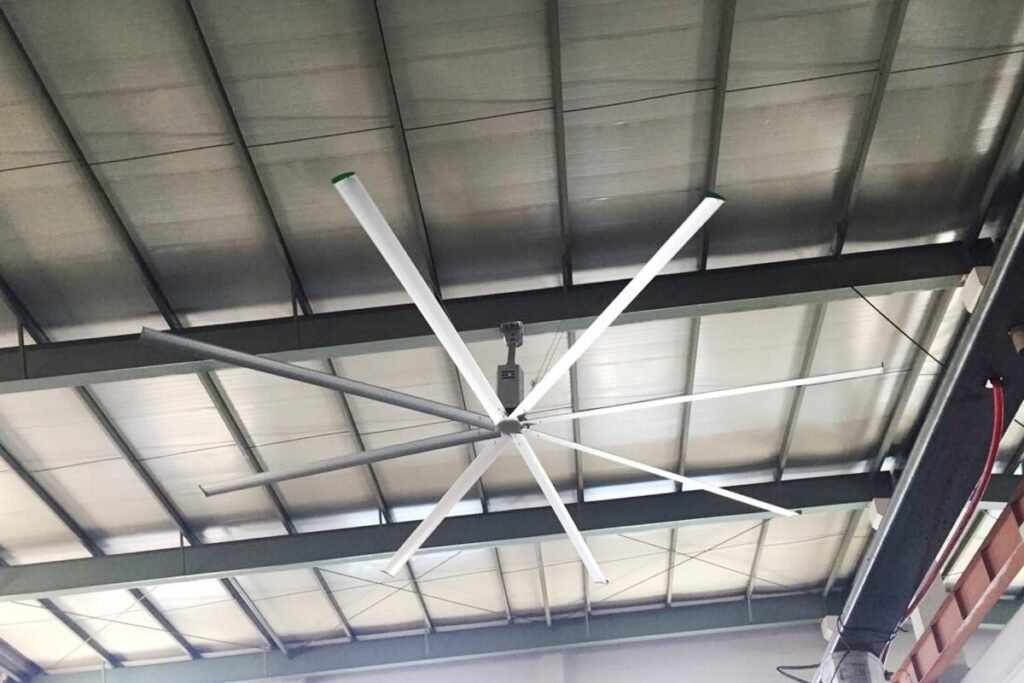
The installation and maintenance costs of HVLS (High Volume, Low Speed) industrial fans can vary significantly based on several factors, including the size and model of the fan, the specific requirements of the facility, and the labor and material costs in the region. Here’s a detailed breakdown of the potential costs associated with HVLS fans:
Installation Costs
- Fan Acquisition: The initial cost of purchasing an HVLS fan can range from several thousand to tens of thousands of dollars, depending on the diameter, materials, and features.
- Installation Services: Professional installation is often recommended to ensure safety and proper functioning. The cost can vary from a few hundred to a few thousand dollars, depending on the complexity of the installation and the rates of the service provider.
- Structural Assessment: Before installation, it may be necessary to assess the structural integrity of the building to ensure it can support the weight and mounting of the HVLS fan. This assessment could add to the upfront costs.
- Electrical Requirements: HVLS fans may require electrical upgrades or dedicated circuits, which can increase installation costs. The need for such upgrades will depend on the existing electrical infrastructure of the facility.
- Permits and Inspections: In some regions, permits may be required for the installation of HVLS fans, and there may be associated fees. Additionally, inspections after installation could incur extra costs.
Maintenance Costs
- Routine Inspections: Regular inspections are crucial for the longevity and safety of HVLS fans. The cost of these inspections can range from a few hundred dollars per year, depending on the service provider and the fan’s location.
- Cleaning: HVLS fans should be cleaned periodically to maintain airflow efficiency and prevent dust buildup. The cost of cleaning can vary based on the fan size and the frequency of cleaning required.
- Repairs and Parts Replacement: Over time, parts of the fan may need to be repaired or replaced, such as the motor, bearings, or blades. The cost for these repairs can vary widely, depending on the complexity of the issue and the cost of the replacement parts.
- Energy Consumption: While HVLS fans are energy-efficient, the cost of electricity for operation should be considered as part of the ongoing maintenance. This cost will depend on the local electricity rates and the fan’s usage patterns.
- Preventive Maintenance Programs: Some companies offer preventive maintenance programs that can help to reduce long-term costs by addressing potential issues before they become major problems. These programs may have a recurring annual or monthly fee.
Factors Affecting Costs
- Size and Model: Larger fans or those with more advanced features will generally cost more to install and maintain.
- Location: The geographic location of the facility can impact labor and material costs.
- Frequency of Use: Fans in continuous operation may require more frequent maintenance.
- Local Regulations: Compliance with local building codes and safety regulations can affect installation and maintenance costs.
In summary, the installation and maintenance costs for HVLS industrial fans can vary widely based on a range of factors. It’s essential to consider all these aspects when budgeting for the implementation of HVLS fans in an industrial setting.
